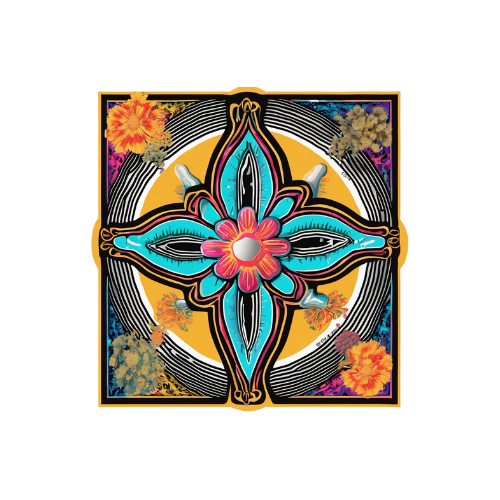Notifications
Pink Oyster
Abstract
Pleurotus djamor, commonly known as the Pink Oyster Mushroom, is a fast-growing saprotrophic fungus renowned for its vibrant pink coloration, delicate structure, and meaty texture when cooked. Distinguished by its striking appearance and adaptability to a wide range of lignocellulosic substrates, P. djamor is a favorite among cultivators for both ornamental and culinary applications. This entry reviews its morphological traits, spore characteristics, growth behavior, and environmental requirements, with emphasis on its suitability for rapid cultivation and its notable preference for higher fruiting temperatures compared to other Pleurotus species.
1. Introduction
The Pink Oyster Mushroom, Pleurotus djamor, is a widely cultivated member of the Pleurotus genus, native to tropical and subtropical regions. It is particularly recognized for its brilliant pink hues and rapid life cycle, often reaching maturity within two to three weeks under optimal conditions. Unlike many other oyster species, P. djamor thrives in warmer environments, making it an ideal choice for cultivation in temperate to tropical climates without the need for significant temperature control.
2. Gill Formation
The gills of Pleurotus djamor are densely spaced, decurrent, and exhibit a vibrant pink coloration that fades to a paler hue as the fruiting body ages. Gill surfaces are highly fertile and contribute to the mushroom’s prolific spore output, often visible as pink dust accumulating beneath mature clusters.
3. Microscopy and Spore Morphology
Spores are cylindrical to subcylindrical, smooth, and hyaline in transmitted light, typically measuring 7–12 µm in length. Spore deposits are pale pink and abundant under favorable conditions. Clamp connections are present throughout the hyphal networks, a diagnostic feature of the species. The hyphae are monomitic, contributing to the soft and delicate texture of the fruiting body.
4. Macromorphology
4.1 Cap (Pileus)
Caps range from 30–70 mm in diameter and are thin, often fan-shaped to shell-like, with undulate margins that become more pronounced as the mushroom matures. The surface is smooth, displaying vivid pink to salmon-pink hues in young specimens, which fade to pale pink or whitish tones upon maturity or exposure to cooking temperatures.
4.2 Stipe (Stem)
Stipes are short, lateral, or entirely absent in tightly clustered formations. When present, they are typically off-center, fibrous, and match the coloration of the cap. The attachment is strong in early development but becomes fragile as the fruiting body matures.
4.3 Performance Characteristics
P. djamor is highly valued for its rapid colonization and fruiting cycle, with pinning often occurring within 10–14 days post-inoculation under warm, humid conditions. It is less tolerant of low temperatures compared to other oyster species but excels in hot climates, making it ideal for summer cultivation or low-tech indoor setups.
5. Nutritional Substrates and Cultivation Conditions
5.1 Primary Substrates
Pink Oyster mushrooms readily colonize a wide range of lignocellulosic materials.
- Straw (Wheat, Oat, Barley):
- Highly effective and commonly used.
- Requires pasteurization for optimal performance.
- Hardwood Sawdust (Supplemented with Bran):
- Enhances yield and fruiting consistency.
- Suitable for more advanced indoor cultivation methods.
- Paper/Cardboard:
- Acceptable for hobbyists but yields are typically lower.
- Agricultural Waste (Corncobs, Banana Leaves, etc.):
- Excellent for regions seeking sustainable, low-cost substrates.
5.2 Bulk Substrates
Pink Oyster benefits from substrates that retain moisture while allowing adequate airflow.
- Pasteurized Straw + Gypsum: Increases structure and calcium availability.
- Supplemented Hardwood Blocks: Provide extended fruiting potential.
- Bagasse, Coir, or Mixed Organic Waste: Viable in resource-limited environments.
5.3 Additives and Supplements
- Gypsum (CaSO₄): Improves texture and calcium content.
- Bran Supplements: Enhance nitrogen and protein levels, boosting yield.
- Soy Hulls: Commonly mixed with sawdust for added nutrition.
6. Fruiting Parameters
- Colonization Temperature: 75–86°F (24–30°C)
- Fruiting Temperature: 77–86°F (25–30°C)
- Relative Humidity: 85–95% RH during fruiting
- CO₂ Levels: Frequent fresh air exchange required; high CO₂ leads to elongated stems and malformed caps
- Light: Indirect natural light or fluorescent light encourages even cap development and pigmentation
7. Summary
Pleurotus djamor is a fast-growing, visually striking oyster mushroom known for its bright pink coloration, short cultivation cycle, and adaptability to warm climates. Its delicate caps and decurrent gills contribute to its reputation as both an ornamental and culinary species. Ideal for beginner and commercial growers alike, Pink Oyster mushrooms thrive on a wide range of inexpensive agricultural byproducts and perform exceptionally well in high-humidity, high-temperature environments. Proper hydration, frequent fresh air exchange, and stable temperatures are key to achieving dense, vibrant flushes.
